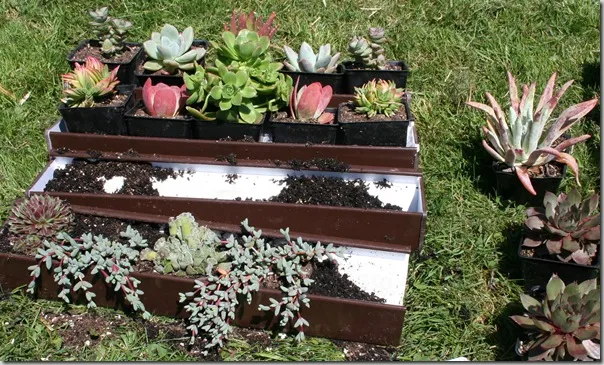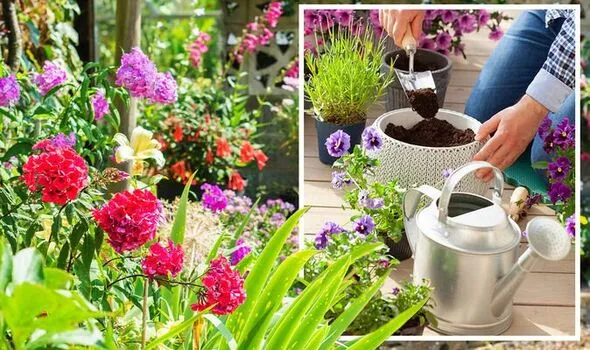- Variegated Pothos, like the Golden Pothos and Marble Queen, are stunning, easy-care houseplants perfect for beginners and experts alike.
- Providing bright, indirect light is key to maintaining their beautiful leaf variegation.
- Proper watering involves letting the soil dry out significantly between waterings to prevent root rot.
- Pothos vines are versatile and look spectacular trailing from variegated pothos stands, shelves, or hanging baskets.
- Propagation is incredibly easy, allowing you to create more plants or share the joy!
Walk into almost any plant-loving home, office, or greenhouse, and chances are you’ll spot a Pothos vine gracing the space. These incredibly popular houseplants, particularly the variegated varieties, bring a splash of vibrant color and lush greenery with minimal fuss. From the classic Golden Pothos with its golden flecks to the striking Marble Queen with its bold white and green patterns, their cascading vines are a delight. Displayed on variegated pothos stands, hanging baskets, or trailing from shelves, they effortlessly elevate any room. But beyond their good looks, these plants are renowned for their resilience. As someone who sometimes gets a little… forgetful… with watering, I can personally attest to their forgiving nature. If you’re ready to bring a touch of easy elegance into your home, let’s dive into how to keep your variegated beauties thriving.
Contents
- Getting Started: Choosing and Potting Your Variegated Pothos
- The Light Fantastic: Keeping Variegation Vibrant
- Watering Wisdom: Finding the Right Balance
- Pruning and Propagating: Encouraging Growth and Sharing the Love
- Feeding Your Pothos: A Little Help During Growth
- Troubleshooting Common Pothos Problems
- Bring Home a Variegated Pothos Today!
Getting Started: Choosing and Potting Your Variegated Pothos
Finding a healthy plant is the first step to success. Look for a Pothos with upright, firm leaves, visible new growth, and no sign of yellowing or brown spots. Once you’ve picked your new green friend, it’s time to think about its home – the pot.
For Pothos, drainage is non-negotiable. They hate sitting in soggy soil, which is a fast track to root rot. I prefer using terracotta or earthenware pots because they breathe well and help the soil dry out faster. However, if you fall in love with a decorative pot that lacks drainage, don’t despair! You can simply keep your plant in a slightly smaller nursery pot (or a terracotta pot with drainage) and place it inside the decorative one. Just remember to take it out when watering, let it drain completely, and then pop it back in.
When repotting, choose a pot that’s only one size larger than the current one – typically about 2 inches wider in diameter. This gives the roots room to grow without overwhelming the plant with too much soil that stays wet for too long. Spring is usually the best time to repot as the plant enters its active growing phase.
As for soil, a standard, well-draining indoor potting mix is perfect. To give it an extra boost of aeration and ensure excellent drainage, I like to mix in a handful of perlite and a little orchid bark. This keeps the soil from becoming too compacted and allows excess water to flow freely, preventing those dreaded soggy conditions.
The Light Fantastic: Keeping Variegation Vibrant
One of the many reasons variegated Pothos are so beloved is their adaptability to different lighting conditions. While they are known for tolerating low light, this comes with a caveat, especially for variegated types:
- Bright, Indirect Light: This is the sweet spot. It encourages faster growth and, crucially, helps maintain the stunning white or yellow patterns (the variegation) on the leaves. Think of a spot near a window that receives bright light but where the sun’s rays don’t directly hit the leaves. Direct sun can scorch their beautiful foliage.
- Lower Light: Your Pothos will likely survive, but growth will be slower, and the variegation may start to fade, leaving you with more solid green leaves. This is the plant’s way of trying to capture more light with the green chlorophyll-rich parts of the leaf.
- Real-Life Tip: I have a Golden Pothos in a bathroom with absolutely no window, thriving purely on the humidity from showers. While it doesn’t have spectacular variegation in this low-light spot, it’s a testament to their toughness! However, my variegated Marble Queen sits closer to an east-facing window to keep her patterns crisp.
Understanding your plant’s native environment helps. In the wild, Pothos grow along the forest floor or climb up trees, receiving dappled light filtered by the canopy above. Mimicking this filtered, indirect light at home is ideal, especially for maintaining that coveted variegation.
 A Golden Pothos plant in a white pot placed on a wooden shelf, showing lush green and yellow variegated leaves trailing down.
A Golden Pothos plant in a white pot placed on a wooden shelf, showing lush green and yellow variegated leaves trailing down.
If you notice the variegation on your plant starting to diminish, it’s a clear sign it needs more light. Simply move it closer to a light source, ensuring it’s still protected from direct sun.
A crucial safety note: Pothos plants are toxic if ingested by humans or pets due to calcium oxalate crystals. Always place your variegated pothos stands and hanging baskets out of reach of curious children and furry friends.
Watering Wisdom: Finding the Right Balance
Pothos are quite communicative when it comes to their water needs. They prefer their soil to dry out between waterings rather than staying constantly damp.
- The Thirsty Test: I usually wait until the top two-thirds of the soil feel dry to the touch before watering. A simple finger test works wonders!
- How to Water: When it’s time to water, water thoroughly until you see water draining from the bottom of the pot. Always empty any excess water from the saucer or decorative pot after a few minutes.
- Consistency is Key: Once you figure out your plant’s drying time in its specific location and pot, try to stick to a consistent schedule. Remember, a plant in brighter light will dry out faster than one in a shadier spot.
- Water Quality: While not strictly necessary, using lukewarm water and letting tap water sit out for 24 hours to allow chlorine to dissipate can be beneficial. Rainwater or well water are also excellent choices.
- Seasonal Adjustment: Water more generously during the spring and summer growing seasons. In winter, when growth slows, water less frequently, just keeping the soil lightly moist.
Yellowing leaves are a classic sign of overwatering. If you see this, ease up on the watering schedule and let the soil dry out more completely. If the problem persists, you might need to inspect the roots for root rot.
Pruning and Propagating: Encouraging Growth and Sharing the Love
Pothos are natural climbers and trailers. If you love the look of long, trailing vines cascading from variegated pothos stands or hanging baskets, just let them grow! You can gently guide the vines or even clip them to supports or objects to encourage them to wrap around.
If you prefer a bushier plant, simply pinch off or prune the growing tips. This encourages the plant to branch out, resulting in a fuller appearance. Don’t be afraid to prune long, leggy vines – it helps the plant redirect energy into new growth closer to the base.
When pruning, use clean, sharp scissors or shears to make a cut about 1/4 to 1/2 inch above a leaf node (the small bump on the stem where a leaf or root grows). Cleaning your tools helps prevent introducing bacteria to the plant.
 A hand holding clean pruning shears poised to cut a trailing Golden Pothos vine.
A hand holding clean pruning shears poised to cut a trailing Golden Pothos vine.
The best part? Those cuttings aren’t waste! Pothos are famously easy to propagate, earning them the nickname “Devil’s Ivy” in some places due to their tenacious ability to grow and spread.
- Water Propagation: This is my favorite method because you get to watch the roots grow! Take a healthy vine cutting about 6-12 inches long. Remove any leaves that would be submerged in water, leaving a few leaves at the top. Place the cutting in a glass or jar of water, ensuring the nodes (where you removed leaves) are submerged. Place the jar in a bright, indirect light spot. Change the water every week or whenever it looks cloudy. You’ll see roots start to form within a few weeks! Once the roots are a few inches long, you can either continue growing it in water or pot it up in soil.
- Soil Propagation: You can also plant cuttings directly into a small pot filled with moist potting mix. Use a pencil or chopstick to make a small hole, insert the cutting (again, ensuring a node is below the soil surface), and gently firm the soil around it. Keep the soil consistently moist but not soggy, and roots should develop over time.
 Several Pothos vine cuttings with visible roots propagating in glass jars of water on a windowsill.
Several Pothos vine cuttings with visible roots propagating in glass jars of water on a windowsill.
Feeding Your Pothos: A Little Help During Growth
During the active growing season (typically spring and summer), your variegated Pothos will appreciate a little boost from fertilizer. A balanced liquid houseplant fertilizer works well. Look for one with NPK numbers (Nitrogen, Phosphorus, Potassium) that are relatively equal.
- NPK Breakdown: Nitrogen (N) promotes leafy growth, Phosphorus (P) supports healthy roots, and Potassium (K) helps overall plant health and disease resistance.
- Less is More: I usually use half the strength recommended on the fertilizer packaging to avoid over-fertilizing, which can damage the roots.
- How to Fertilize: Apply liquid fertilizer when you water the plant during the growing season.
- Winter Rest: Do not fertilize your Pothos in the fall and winter months when its growth naturally slows down.
If you suspect you’ve over-fertilized (signs include crispy leaf edges or a white crust on the soil surface), you can try flushing the soil by watering thoroughly and letting excess water drain away multiple times. Skip fertilizing for a while to allow the plant to recover.
Troubleshooting Common Pothos Problems
Pothos are generally fuss-free, but they do communicate their needs through their leaves. Learning to read these signs is key to keeping your plant happy.
- Drooping Leaves: This is the most common cry for help and almost always means your Pothos is thirsty. Give it a good drink, and within a few hours, the leaves should perk right back up. It’s truly amazing to witness!
- Yellow Leaves: As mentioned before, yellowing leaves (Chlorosis) are usually a sign of overwatering. The soil is likely staying too wet, preventing the roots from functioning properly. Let the soil dry out more thoroughly between waterings.
- Brown or Mushy Roots: If yellowing persists and the soil is wet, check the roots. Black, mushy roots are a sign of root rot. If caught early, you might be able to save the plant by trimming away the affected roots with clean scissors and repotting into fresh, dry soil. Unfortunately, severe root rot can be fatal.
- Loss of Variegation: If the beautiful patterns on your variegated Pothos start to disappear and the leaves become mostly green, the plant isn’t getting enough light to support the non-green parts of the leaf. Move it to a brighter location with indirect light.
There are many stunning variegated Pothos varieties beyond the Golden Pothos, such as the Marble Queen, N’Joy, and Pearls and Jade, all with similar basic care needs. Their unique patterns make them fantastic candidates for showcasing on variegated pothos stands, adding dynamic visual interest to any corner.
 Two potted Pothos plants on a surface. The plant on the left is a Marble Queen Pothos with striking white and green variegation, and the plant on the right is a Golden Pothos.
Two potted Pothos plants on a surface. The plant on the left is a Marble Queen Pothos with striking white and green variegation, and the plant on the right is a Golden Pothos.
Here’s a quick look at the Golden Pothos details:
- Scientific Name: Epipremnum Aureum
- Common Names: Golden Pothos, Devil’s Ivy
- Zone: Typically grown indoors; outdoors in USDA Zones 10-11.
- Light: Bright, indirect is best; tolerates lower light but may lose variegation; avoid direct sun.
- Humidity: Average indoor humidity is fine; appreciates higher humidity (like in a bathroom) but not required.
- Water: Allow soil to dry out significantly between waterings.
Bring Home a Variegated Pothos Today!
Variegated Pothos, whether the classic Golden or a striking Marble Queen, are truly exceptional houseplants. They are resilient, rewarding, and incredibly beautiful, especially when their trailing vines are displayed prominently on variegated pothos stands or shelves. With straightforward care requirements and a willingness to bounce back from minor neglect, they instill confidence in even the most hesitant plant parent. If you don’t already have one of these beauties, keep an eye out on your next nursery visit. Bringing one home might just be the start of a beautiful, lush relationship!
We hope this guide helps you on your journey with these wonderful plants. What’s your favorite way to display your Pothos? Let us know in the comments below! If you found this article helpful, please share it with your fellow plant enthusiasts. And be sure to explore other plant care guides on our site for more green inspiration!







































